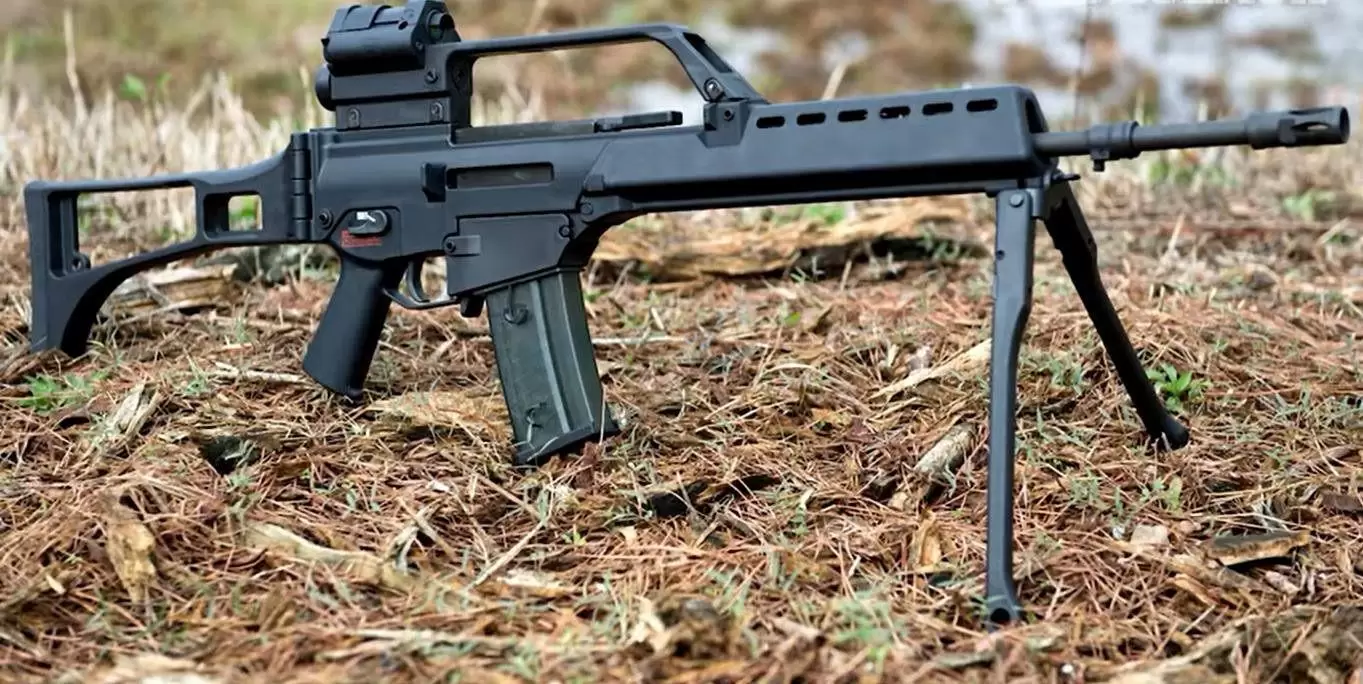
Assault rifles are no longer merely standard-issue firearms—they’re the quintessential weapon of the contemporary soldier. They transformed the way wars are fought, providing a combination of firepower, versatility, and simplicity that no previous firearm could provide. From their beginnings in World War II to the latest high-tech designs today, assault rifles have developed with the changing needs of warfare.

What Sets an Assault Rifle Apart?
To grasp the effects of assault rifles, it is helpful to understand what sets them apart. In contrast to other rifles, they’re often selective-fire, which means they’re able to alternate between full-auto and semi-auto or burst fire modes. They shoot intermediate cartridges—more powerful than pistol rounds but lighter and having less recoil than full-sized rifle rounds. Combine that with removable magazines, lightweight, and the one-man carry/operation capability, and it’s easy to understand why these firearms became a battlefield changer. Those characteristics make them ideal for mobile combat in a variety of environments.

From WWII to the Cold War: The Origins
The concept of the assault rifle was first developed during World War II with Germany’s Sturmgewehr 44 (StG 44). It added several characteristics that would come to typify the genre: select fire, an intermediate cartridge, and a short length. After World War II, the Soviet Union took the idea and created the now-legendary AK-47, designed by Mikhail Kalashnikov. Reliable, simple, and easy to produce in large quantities, the AK-47 became an international standard in both national and insurgent armies.

The U.S. Approach: M14, M16, and the M4
Although the Soviets adopted the assault rifle sooner, the US initially designed a full-power rifle in the M14, the 7.62x51mm NATO. Meant to substitute for several firearms, the M14 had issues with weight and recoil when used in automatic fire. Its flaws were revealed in the Vietnam War, where jungle combat called for something lighter and easier to control.

This resulted in the implementation of the M16, which shoots the smaller 5.56x45mm round. The rifle was lighter, more recoil-resistant, and permitted soldiers to carry greater amounts of ammunition onto the battlefield. Soon followed the M4 Carbine, a more compact, multi-purpose version of the M16. With its folding stock and modular construction, the M4 gained popularity in close-quarters battle and remains popular today.

Russian Evolution: The AK-12 and Modern Refinements
Russia, on the other hand, clung to the AK formula but slowly modernized it. The AK-12, the newest of the Kalashnikov line, introduces advanced features such as accessory rails, better ergonomics, and ambidextrous controls. But beneath all this, it’s still based on the same ideas of simplicity and ruggedness.

Despite design modifications, the AK-12 still keeps the loose tolerances and gas piston design that made the original AK so reliable, despite mud, sand, or snow. Russian engineers’ priority has always been performance under harsh conditions, rather than high-quality manufacturing precision.

Compact Variants for Urban Combat and Special Ops
As warfare spread to urban areas and enclosed spaces, short-barreled assault rifles gained significance. Models such as the AKS-74UN and SIG Sauer MCX Rattler indicate this trend. These firearms feature shorter barrels, folding stock models, and modular designs that are perfect for vehicle crews, special operations, or close-quarters operations.

The AKS-74UN is only 19 inches overall when the stock is folded, but the MCX Rattler can switch calibers and keep its power in a small package. These aren’t specialized tools—they’re necessities for urban combat where speed and maneuverability are most important.

Looking Ahead: The XM7 and Future Trends
Assault rifles remain to be improved upon. The United States Army is currently transitioning to the XM7, manufactured by SIG Sauer, under its Next Generation Squad Weapon (NGSW) project. It employs a new 6.8x51mm cartridge with an increased range and the capability to break through current body armor.

The XM7 also introduces newer ergonomics, a modular design concept, and better optics compatibility. This is part of a larger trend: combining electronics, new materials, and intelligent ammunition to make infantry weapons useful in wars of the future.
